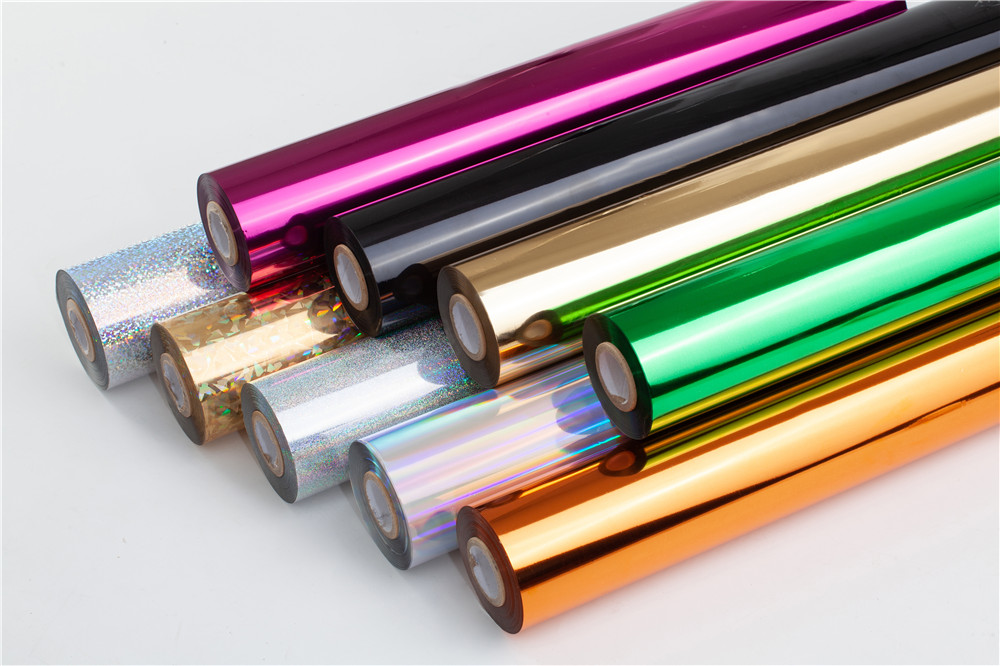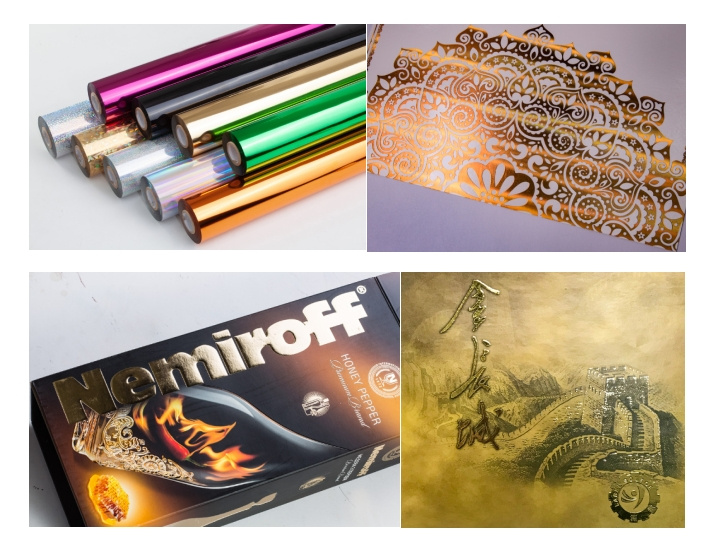How to Choose the Perfect Screen Printing Foil for Your Project?
Screen printing foil can add a touch of elegance and sophistication to your projects, making them stand out with a metallic sheen that catches the eye. However, choosing the right foil for your specific needs can be a daunting task given the variety of options available. This guide will walk you through the essential factors to consider when selecting the perfect screen printing foil for your project.

Before diving into the specifics of foil types, it's crucial to have a clear understanding of your project requirements. Ask yourself the following questions:
What is the purpose of the project? (e.g., promotional materials, packaging, apparel)
What type of material will you be printing on? (e.g., paper, fabric, plastic)
What is the desired effect? (e.g., glossy, matte, holographic)
There are several types of foils available, each offering unique characteristics and finishes. Here are the most common types:
Cold Foil
Cold foil is applied using an adhesive and does not require heat. It is ideal for projects that need a quick turnaround and is suitable for a variety of substrates, including paper and plastic. Cold foil offers a high-gloss finish and is perfect for intricate designs.
Hot Foil
Hot foil requires heat and pressure to transfer the foil onto the substrate. It is known for its durability and is often used for high-end packaging, book covers, and labels. Hot foil can produce a range of finishes, including metallic, matte, and holographic.
The material you are printing on plays a significant role in determining the type of foil to use. Different substrates interact with foils in various ways:
Paper: Both cold and hot foils work well on paper. However, hot foil is often preferred for its durability and premium finish.
Fabric: For textiles, hot foil is generally more suitable due to its ability to withstand washing and wear.
Plastic: Cold foil is often used for plastic substrates as it adheres well without the need for high temperatures.
The complexity of your design can influence your choice of foil. Cold foil is excellent for detailed and intricate designs due to its precise application process. Hot foil, while also capable of handling detailed designs, is better suited for larger, bolder elements.
Foils come in a wide range of colors and finishes. Consider the following options to match your project's aesthetic:
Metallic Foils: Available in gold, silver, and other metallic hues, these foils add a luxurious touch.
Matte Foils: For a more subdued and elegant look, matte foils are an excellent choice.
Holographic Foils: These foils create a dynamic, multi-colored effect that changes with light and angle, perfect for eye-catching designs.
Consider the intended use and lifespan of your printed materials. Hot foil is generally more durable and resistant to wear and tear, making it suitable for items that will be handled frequently or exposed to the elements. Cold foil, while less durable, is ideal for short-term projects or items that will not be subjected to heavy use.
Budget is always a factor in any project. Cold foil is typically more cost-effective due to its quicker application process and lower equipment costs. Hot foil, while more expensive, offers superior quality and durability, making it a worthwhile investment for high-end projects.
If sustainability is a priority, consider the environmental impact of your foil choice. Some manufacturers offer eco-friendly foils made from recycled materials or with reduced chemical usage. Research and choose a supplier that aligns with your environmental values.
Choosing the perfect screen printing foil for your project involves careful consideration of various factors, including the type of foil, substrate, design complexity, color and finish options, durability, cost, and environmental impact. By understanding your project requirements and the characteristics of different foils, you can make an informed decision that enhances the quality and appeal of your printed materials.
For high-quality foils that meet diverse project needs, consider Dragon Foils Ltd., a leading manufacturer renowned for its excellence in cold and hot foil production. Over 100 colors and holographic patterns are available and customized patterns and registered lenses can be achieved in Dragon Foils. With a commitment to quality and innovation, Dragon Foils can help you achieve stunning results for your screen printing projects.

1. Understand Your Project Requirements
Before diving into the specifics of foil types, it's crucial to have a clear understanding of your project requirements. Ask yourself the following questions:
What is the purpose of the project? (e.g., promotional materials, packaging, apparel)
What type of material will you be printing on? (e.g., paper, fabric, plastic)
What is the desired effect? (e.g., glossy, matte, holographic)
2. Types of Screen Printing Foils
There are several types of foils available, each offering unique characteristics and finishes. Here are the most common types:
Cold Foil
Cold foil is applied using an adhesive and does not require heat. It is ideal for projects that need a quick turnaround and is suitable for a variety of substrates, including paper and plastic. Cold foil offers a high-gloss finish and is perfect for intricate designs.
Hot Foil
Hot foil requires heat and pressure to transfer the foil onto the substrate. It is known for its durability and is often used for high-end packaging, book covers, and labels. Hot foil can produce a range of finishes, including metallic, matte, and holographic.
3. Consider the Substrate
The material you are printing on plays a significant role in determining the type of foil to use. Different substrates interact with foils in various ways:
Paper: Both cold and hot foils work well on paper. However, hot foil is often preferred for its durability and premium finish.
Fabric: For textiles, hot foil is generally more suitable due to its ability to withstand washing and wear.
Plastic: Cold foil is often used for plastic substrates as it adheres well without the need for high temperatures.
4. Design Complexity
The complexity of your design can influence your choice of foil. Cold foil is excellent for detailed and intricate designs due to its precise application process. Hot foil, while also capable of handling detailed designs, is better suited for larger, bolder elements.
5. Color and Finish Options
Foils come in a wide range of colors and finishes. Consider the following options to match your project's aesthetic:
Metallic Foils: Available in gold, silver, and other metallic hues, these foils add a luxurious touch.
Matte Foils: For a more subdued and elegant look, matte foils are an excellent choice.
Holographic Foils: These foils create a dynamic, multi-colored effect that changes with light and angle, perfect for eye-catching designs.
6. Durability and Longevity
Consider the intended use and lifespan of your printed materials. Hot foil is generally more durable and resistant to wear and tear, making it suitable for items that will be handled frequently or exposed to the elements. Cold foil, while less durable, is ideal for short-term projects or items that will not be subjected to heavy use.
7. Cost Considerations
Budget is always a factor in any project. Cold foil is typically more cost-effective due to its quicker application process and lower equipment costs. Hot foil, while more expensive, offers superior quality and durability, making it a worthwhile investment for high-end projects.
8. Environmental Impact
If sustainability is a priority, consider the environmental impact of your foil choice. Some manufacturers offer eco-friendly foils made from recycled materials or with reduced chemical usage. Research and choose a supplier that aligns with your environmental values.

Conclusion
Choosing the perfect screen printing foil for your project involves careful consideration of various factors, including the type of foil, substrate, design complexity, color and finish options, durability, cost, and environmental impact. By understanding your project requirements and the characteristics of different foils, you can make an informed decision that enhances the quality and appeal of your printed materials.
For high-quality foils that meet diverse project needs, consider Dragon Foils Ltd., a leading manufacturer renowned for its excellence in cold and hot foil production. Over 100 colors and holographic patterns are available and customized patterns and registered lenses can be achieved in Dragon Foils. With a commitment to quality and innovation, Dragon Foils can help you achieve stunning results for your screen printing projects.
